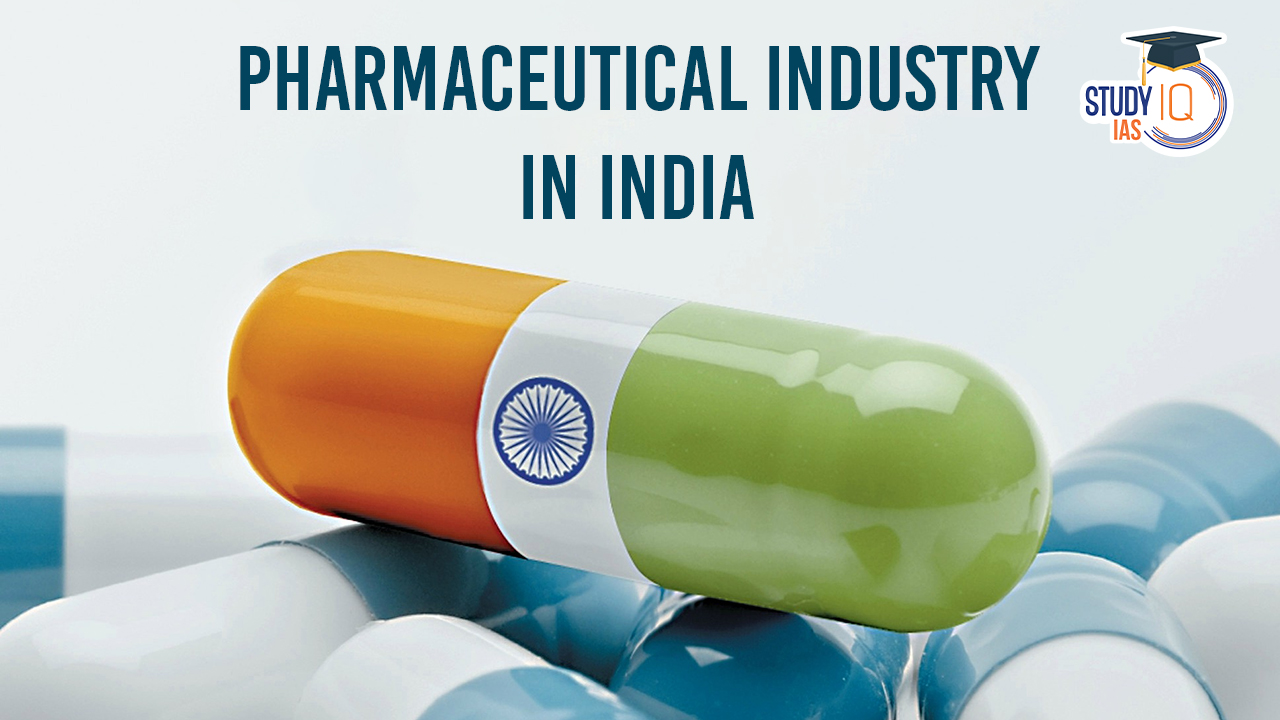Table of Contents
Indian pharmaceutical industry holds a prominent position globally, ranking 3rd worldwide for production by volume and 14th by value. Boasting a 20% share in global generic medicine supply by volume, India is the largest provider of generic medicines globally and is a key player in vaccine manufacturing.
The country hosts the highest number of US-FDA-compliant Pharma plants outside the USA, with over 3,000 pharmaceutical companies and an extensive network of more than 10,500 manufacturing facilities. India’s pharmaceutical sector benefits from a highly skilled and knowledgeable workforce.
With a diverse portfolio, the industry offers 60,000 generic brands spanning 60 therapeutic categories. Major segments include generic drugs, OTC medicines, API/bulk drugs, vaccines, contract research and manufacturing, biosimilars, and biologics. This dynamic landscape highlights India’s crucial role in meeting global healthcare needs and its continuous contributions to the pharmaceutical sector’s growth and innovation.
We’re now on WhatsApp. Click to Join
Pharmaceutical Industry in India
The Indian pharmaceutical industry has gained global recognition for its remarkable achievements, marked by competitive pricing and high-quality products. Notably, India produces 60% of the world’s vaccines and 20% of generic medicines. In the pharmaceutical sector, 100% Foreign Direct Investment (FDI) is permitted under the automatic route for greenfield projects. For brownfield pharmaceuticals, 74% FDI is allowed automatically, with the remaining 26% requiring government approval.
Indian pharmaceutical companies serve over 200 countries, with key contributions such as supplying more than 50% of Africa’s generic medicine needs, approximately 40% of the generic demand in the US, and around 25% of all medicines in the UK. India is a dominant player in global vaccine supply, accounting for about 60% of the world’s vaccine demand. Notably, 70% of the World Health Organization’s vaccines, as per the essential immunization schedule, are sourced from India.
The nation boasts a substantial pool of scientists and engineers, positioning it to lead the pharmaceutical industry to greater heights. Indian firms play a crucial role in the global fight against AIDS, as over 80% of antiretroviral drugs used globally are supplied by Indian pharmaceutical companies. Recognized as the “pharmacy of the world,” India’s medicines are renowned for their low cost and high quality.
As the 12th largest exporter of medical goods globally, India’s pharmaceutical exports reach more than 200 countries, with the United States being a key market. Generic drugs, comprising 20% of the global export volume, solidify India’s position as the world’s largest provider of generic medicines.
| Information | |
| Market Size | The pharmaceutical market in India is one of the largest in the world, valued at over $40 billion USD. |
| Major Players | Sun Pharma, Dr. Reddy’s Laboratories, Cipla, Lupin, Biocon, and others are major players in the industry. |
| Regulatory Environment | Governed by the Central Drugs Standard Control Organization (CDSCO) and complies with international standards. |
| Research and Development | Significant investment in R&D, with a focus on generic drugs and biosimilars. |
| Exports | India is a major exporter of pharmaceuticals, supplying to over 200 countries. |
| Generic Drug Production | Known as the “pharmacy of the world” due to its prominence in generic drug manufacturing. |
| Emerging Technologies | Increasing interest in biotechnology, biosimilars, and digital health technologies. |
| Challenges | Pricing pressures, regulatory complexities, and the need for continuous innovation. |
| COVID-19 Response | Played a crucial role in global vaccine production and distribution during the pandemic. |
| Future Trends | Growing emphasis on personalized medicine, digitalization, and sustainable practices. |
‘
Pharmaceutical Industry in India Advantages
Cost-Effective Manufacturing: India is known for its cost-effective manufacturing capabilities. The country’s pharmaceutical industry excels in the production of generic drugs, which are often more affordable than their counterparts from other countries.
Skilled Workforce: India has a large pool of skilled scientists, researchers, and professionals in the pharmaceutical and biotechnology sectors. This skilled workforce contributes to innovation, research, and development activities.
Global Generic Drug Supplier: Often referred to as the “pharmacy of the world,” India is a major supplier of generic drugs globally. The industry’s focus on generic medicines allows it to cater to a wide range of health needs at competitive prices.
Regulatory Compliance: The regulatory framework in India, governed by the Central Drugs Standard Control Organization (CDSCO), ensures that the pharmaceutical products meet international quality standards. This compliance is crucial for gaining acceptance in global markets.
Large Domestic Market: India has a vast and diverse domestic market for pharmaceuticals. This provides a testing ground for new products and therapies and allows companies to scale up their operations before entering international markets.
Biosimilars and Biotechnology: The Indian pharmaceutical industry is increasingly focusing on the development of biosimilars and biotechnology products. This shift towards complex and high-value products contributes to the industry’s growth and global competitiveness.
Research and Development: Indian pharmaceutical companies invest significantly in research and development (R&D), driving innovation in drug discovery and development. This focus on R&D helps in creating a robust pipeline of new and improved medicines.
Strategic Partnerships: Indian pharmaceutical companies often engage in strategic partnerships, collaborations, and licensing agreements with global pharmaceutical firms. This allows for the exchange of knowledge, technology, and access to global markets.
Government Initiatives: The Indian government has introduced various initiatives and policies to promote the pharmaceutical industry, including incentives for research, development grants, and tax benefits, fostering a favorable business environment.
COVID-19 Response and Vaccine Production: During the COVID-19 pandemic, India played a crucial role in global vaccine production. The country’s pharmaceutical companies were at the forefront of manufacturing and supplying vaccines, showcasing the industry’s capability and agility.
Pharmaceutical Industry in India Challenges
Regulatory Complexity: Dealing with a complex regulatory environment, including frequent changes in regulations and compliance standards, can pose challenges for pharmaceutical companies operating in India.
Intellectual Property Issues: The industry has faced criticism for issues related to intellectual property rights. Generic drug manufacturing, although a strength, has led to disputes over patents, both domestically and internationally.
Quality Control and Compliance: Ensuring consistent high-quality manufacturing processes and complying with global quality standards is crucial for gaining and maintaining the trust of international markets.
Price Control Regulations: The government of India imposes price control regulations on certain essential drugs to ensure affordability. While this benefits consumers, it can affect the profit margins of pharmaceutical companies, especially in the case of generic drug manufacturers.
Access to Healthcare Infrastructure: Despite being a major pharmaceutical producer, certain regions within India still face challenges in terms of access to healthcare facilities and medicines. This inequality in healthcare infrastructure can limit the reach of pharmaceutical products.
R&D Investment and Innovation: While the industry invests in research and development, there is room for increased innovation. Striking a balance between generic drug production and investing in innovative research remains a challenge.
Global Competition: The global pharmaceutical market is highly competitive. Indian companies face stiff competition from multinational corporations, particularly in the development of novel drugs and biotechnology products.
Skilled Workforce Retention: Attracting and retaining a skilled workforce, including scientists, researchers, and technicians, is crucial for the industry’s growth. There may be challenges in retaining talent due to factors such as competition, salary expectations, and career opportunities abroad.
Environmental Sustainability: Increasing awareness of environmental issues necessitates sustainable practices in pharmaceutical manufacturing. Adapting to environmentally friendly processes while maintaining cost-effectiveness is a challenge for the industry.
Counterfeit Drugs: The presence of counterfeit drugs in the market remains a concern. Ensuring the authenticity and safety of pharmaceutical products is crucial for maintaining public trust.
Supply Chain Disruptions: Events like the COVID-19 pandemic highlighted the vulnerability of global supply chains. Pharmaceutical companies faced challenges in ensuring the uninterrupted supply of raw materials and finished products.
Data Security and Cyber Threats: As the industry becomes more digitized, concerns about data security and cyber threats increase. Protecting sensitive information, especially in the context of clinical trials and research, is a growing challenge.
Pharmaceutical Industry in India Government Initiatives
| Aspect | Details |
| Global Impact | India produces 60% of the world’s vaccines and 20% of generic medicines. |
| FDI Policies | 100% FDI in greenfield pharmaceuticals under the automatic route
74% FDI in brownfield pharmaceuticals under the automatic route, with further approvals required. |
| Global Exporter | Exports to 200+ countries
Supplies 50% of Africa’s generics, 40% of US generic demand, and 25% of the UK’s medicines. |
| Strengths | Known as the “pharmacy of the world.”
Largest provider of generic medicines globally Dominant in vaccine supply, including 70% of WHO’s vaccines. |
| Growth Drivers | Government support
Medical tourism Robust infrastructure Strong manufacturing capabilities Cost efficiency. |
| Antiretroviral Drugs | Over 80% of global antiretroviral drugs combating AIDS are supplied by Indian pharmaceutical firms. |
| Challenges | Lack of innovation infrastructure
Dependency on imports, particularly China, for 80% of APIs. Frequent FDA inspections diverting funds from growth areas. |
| Government Initiatives | Production Linked Incentives (PLI) Schemes 1.0 and 2.0.
Bulk Drug Parks development. Strengthening of Pharmaceutical Industry (SPI) Scheme. Medical Device Parks. |
| AYUSH Super Specialty Hospitals scheme.
Pharmaceuticals Promotion Development Scheme (PPDS). |
Way Forward for Pharmaceutical Industry in India
- Innovation and Research: Increase R&D investment for groundbreaking drug development.
- Infrastructure Development: Embrace digital technologies and enhance manufacturing facilities.
- Sustainable Practices: Implement eco-friendly manufacturing for global sustainability goals.
- Regulatory Reforms: Simplify regulations for a business-friendly environment.
- Global Collaboration: Foster partnerships for knowledge exchange and joint ventures.
- Talent Development: Enhance workforce skills through continuous training programs.
- Access to Healthcare: Improve rural healthcare and balance affordability with fair profitability.
- Preparedness for Crises: Establish rapid response mechanisms for global health emergencies.
- Digital Health Integration: Promote telemedicine and ensure robust data security measures.
- Government Support: Expand incentive schemes and ensure policy stability for long-term planning.
Pharmaceutical Industry in India UPSC
The Indian pharmaceutical industry ranks 3rd globally for production volume, holding a 20% share in global generic medicine supply. With over 3,000 companies and 10,500 manufacturing facilities, India is a key player in vaccine manufacturing and a major exporter to 200+ countries. Despite challenges like regulatory complexity and global competition, the industry’s strengths lie in cost-effective manufacturing, a skilled workforce, and government support. Notably, India produces 60% of the world’s vaccines and 20% of generic medicines. To move forward, the industry should focus on innovation, sustainable practices, streamlined regulations, global collaboration, and leveraging digital health technologies.


 Most Commonly Used Cancer Drugs and Thei...
Most Commonly Used Cancer Drugs and Thei...
 India Launched AI-Powered Traffic Manage...
India Launched AI-Powered Traffic Manage...
 Alzheimer Disease: Characteristics, Caus...
Alzheimer Disease: Characteristics, Caus...





















